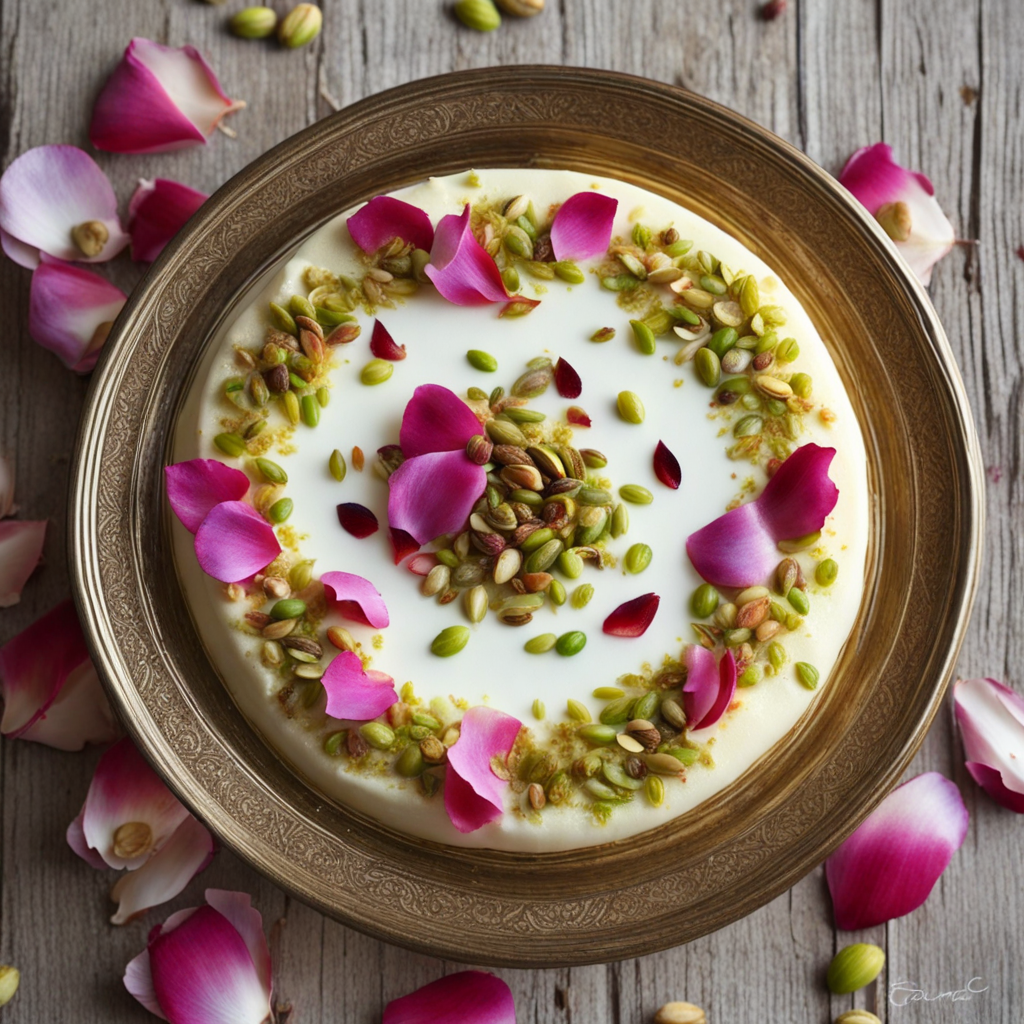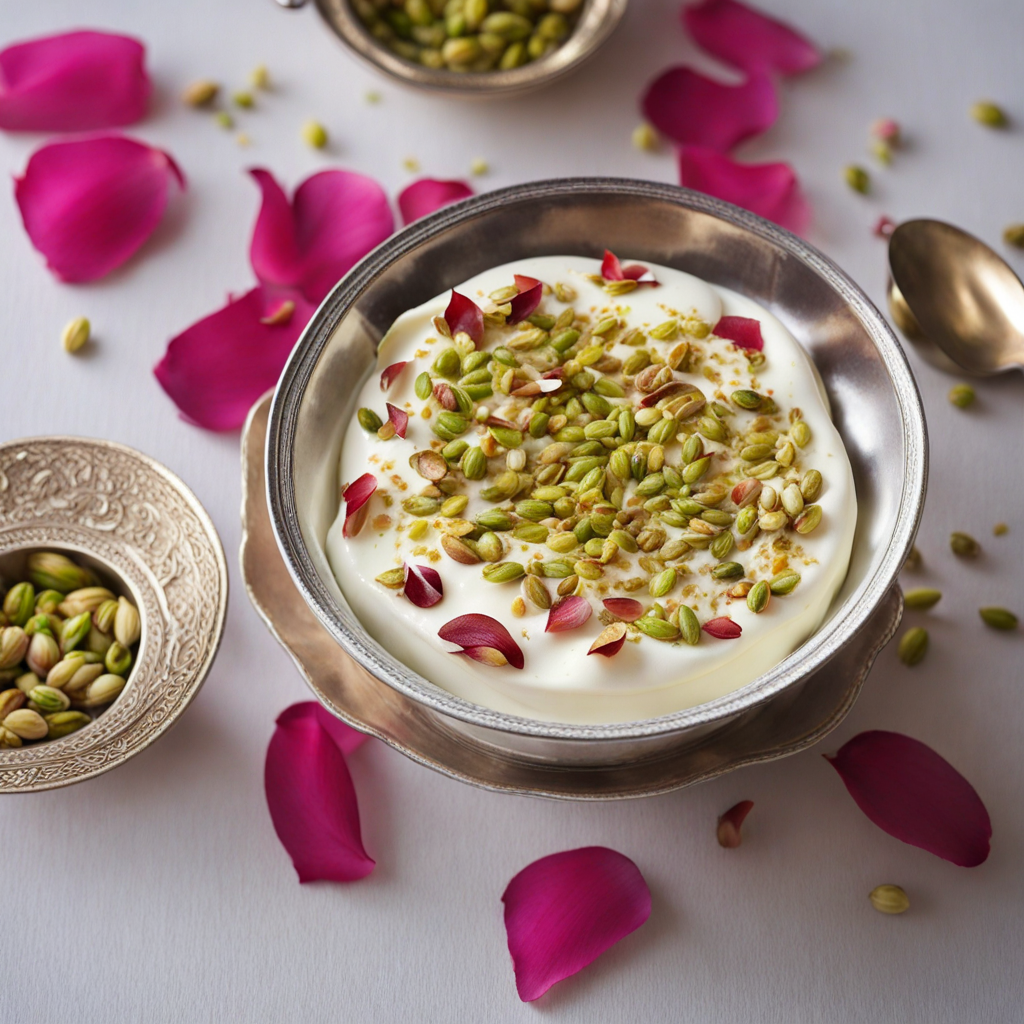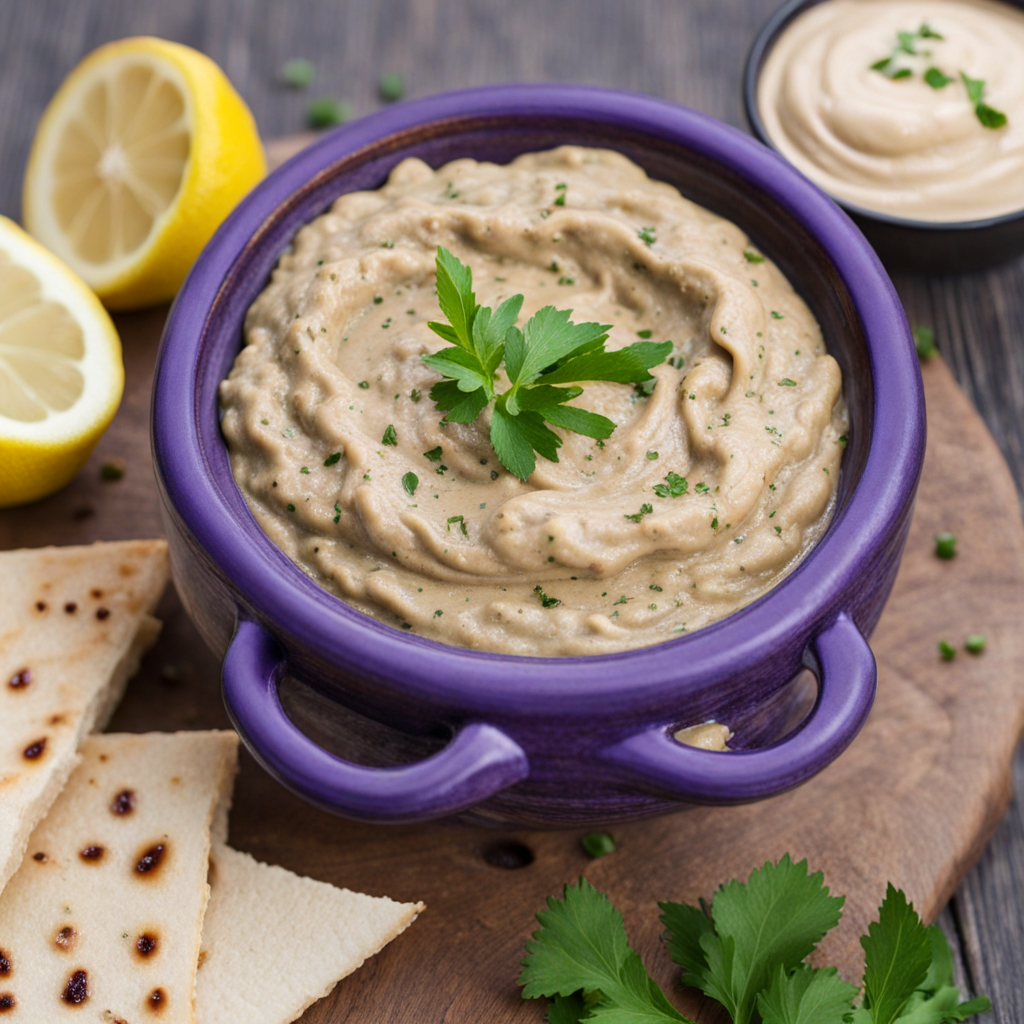Layali Lubnan
Layali Lubnan, which translates to "Nights of Lebanon," is a delightful dessert that embodies the rich culinary heritage of Syria and the broader Levant region. This exquisite dish features a base of semolina and milk, which is cooked to a creamy, pudding-like consistency, offering a comforting texture that melts in your mouth. The semolina is often combined with sugar and flavored with a hint of rose or orange blossom water, imbuing it with a subtle floral aroma that elevates its taste profile. The result is a sensuous blend of sweetness and creaminess that evokes the warmth and hospitality of Middle Eastern cuisine. Layered on top of the semolina base is a generous drizzle of syrup, typically made from sugar, water, and more floral essences, which seeps into the pudding, enhancing its flavor and adding a glossy sheen. To add a delightful crunch, Layali Lubnan is often garnished with a sprinkling of finely chopped pistachios or almonds, providing a textural contrast that balances the soft, creamy layers below. This combination of textures and flavors creates a harmonious experience, making each bite a celebration of taste. Served chilled, Layali Lubnan is not just a dessert; it's an experience that transports you to the vibrant streets of Syria. It is a perfect ending to a meal or a sweet treat to enjoy during an afternoon gathering with friends and family. As you savor its unique flavors, you’ll find yourself enchanted by the cultural significance and the memories tied to this beloved dish, making it a must-try for anyone looking to explore the diverse and rich tastes of Middle Eastern cuisine.
How It Became This Dish
The Sweet History of ليالي لبنان (Layali Lubnan): A Culinary Journey Through Time Introduction Among the many delightful desserts that grace the tables of the Levant, Layali Lubnan, or "Lebanese Nights," stands out as a sweet emblem of culinary heritage. This dish is not merely a dessert; it embodies the rich tapestry of Middle Eastern history, culture, and tradition, bringing with it stories of joy, celebration, and communal gatherings. As we delve into the origins, cultural significance, and evolution of Layali Lubnan, we uncover the layers of history that contribute to its cherished status in Syrian and Lebanese cuisine. Origins and Composition Layali Lubnan is believed to have originated in Lebanon, although its popularity has spread throughout the Levant, especially in Syria, where it is a beloved staple. The dessert is primarily composed of semolina, sugar, milk, and rose or orange blossom water, often garnished with crushed pistachios or almonds. The semolina is cooked until it thickens, creating a creamy, pudding-like consistency that is then chilled and set. The aromatic floral waters imbue the dish with a distinct fragrance, evoking the sensory delights of the region’s gardens. The name "Layali Lubnan" translates to "Lebanese Nights," which hints at the dish's connection to the evening gatherings and celebrations that characterize Lebanese hospitality. This connection to night-time festivities invites diners to indulge in its sweet, comforting flavors, often shared among family and friends. Cultural Significance In the Levantine culture, food holds a central place in social interactions and celebrations. Layali Lubnan is more than just a dessert; it is a symbol of hospitality and community. During festive occasions such as weddings, Ramadan, and family gatherings, this luscious treat is often served, showcasing the importance of sharing food as an expression of love and unity. The dish's rich flavors and soothing textures make it a popular choice for those seeking comfort food, often associated with nostalgia and cherished memories. In Syrian homes, mothers and grandmothers often prepare Layali Lubnan for their families, passing down recipes and techniques through generations, thus preserving both culinary knowledge and family bonds. The use of floral waters in Layali Lubnan also speaks to the Levant’s deep-rooted connection to nature and its bountiful landscapes. Rose and orange blossom waters, derived from the region's abundant flowers, not only enhance the dessert's flavor but also serve as a reminder of the beauty that surrounds these lands. This connection to the environment reinforces the cultural significance of the dish, as it reflects the harmony between nature and culinary traditions. Evolution Over Time The history of Layali Lubnan is intertwined with the broader narrative of Middle Eastern cuisine, which has evolved over centuries due to trade, cultural exchanges, and the influence of various empires. The culinary practices of the ancient Romans, Byzantines, and Ottomans left an indelible mark on the food culture of the region, fostering a melting pot of flavors and techniques. One significant factor in the evolution of Layali Lubnan was the introduction of semolina, which has roots in ancient grain cultivation. Semolina is derived from durum wheat, a staple crop that has been cultivated in the region for millennia. As trade routes expanded and the exchange of goods flourished, ingredients such as sugar, nuts, and floral waters became more accessible, leading to the refinement of desserts like Layali Lubnan. In the 19th and early 20th centuries, the Levant experienced a culinary renaissance, as chefs and home cooks began to experiment with traditional recipes, incorporating new flavors and techniques. The rise of coffeehouses and the cultural salons of cities like Damascus and Beirut contributed to a burgeoning interest in sweet confections, elevating desserts to an art form. Layali Lubnan, with its elegant presentation and complex flavors, found its place among these celebrated sweets. Modern variations of Layali Lubnan continue to emerge, showcasing the adaptability of the dish to contemporary tastes and dietary preferences. Chefs today may experiment with alternative sweeteners, dairy-free options, or innovative presentations, while still honoring the traditional essence of the dessert. This evolution demonstrates how Layali Lubnan remains relevant, reflecting both the history and the future of Levantine cuisine. Conclusion Layali Lubnan is much more than a delectable dessert; it is a symbol of the rich cultural heritage of the Levant. From its origins in Lebanon to its cherished status in Syrian homes, this dish encapsulates the essence of community, hospitality, and the celebration of life’s sweetest moments. Its evolution over time mirrors the dynamic nature of food culture in the region, showcasing the intertwining of tradition and innovation. As we savor a bite of Layali Lubnan, we are not just enjoying a treat; we are partaking in a culinary narrative that spans centuries, connecting us to the past while inviting us to celebrate the present. This enchanting dessert, steeped in history and laden with meaning, continues to inspire generations, reminding us of the power of food to bring people together and create lasting memories. Whether enjoyed during a festive gathering or a quiet evening at home, Layali Lubnan is a testament to the sweetness of life in the heart of the Levant.
You may like
Discover local flavors from Syria







